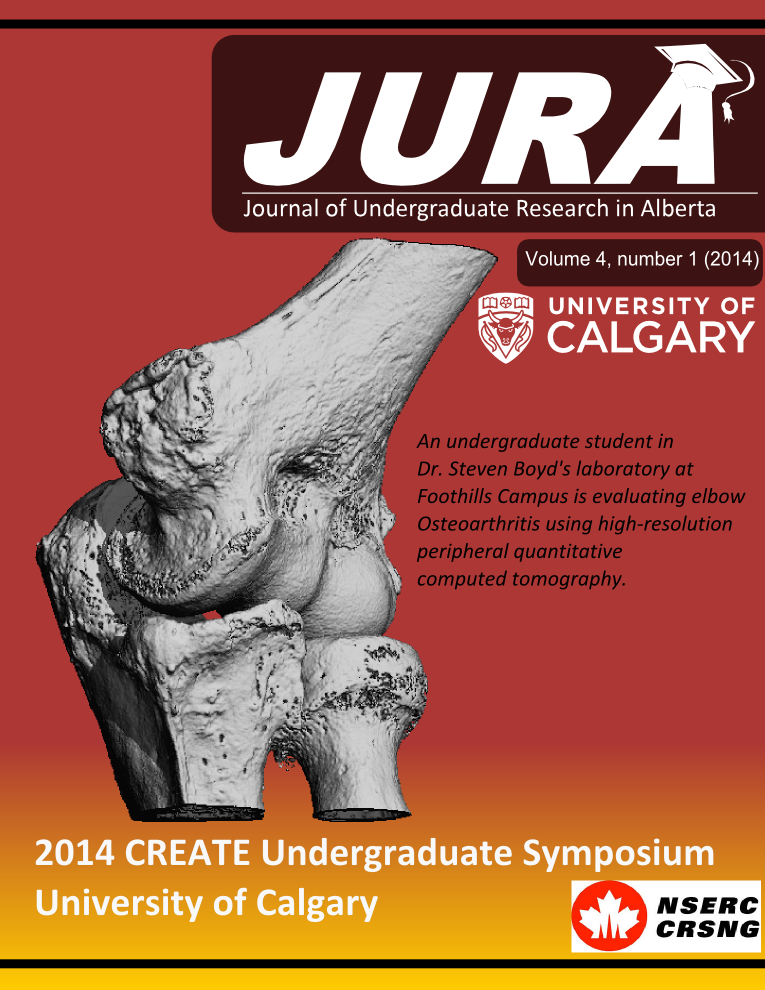THE INFLUENCE OF INDIVIDUAL MUSCLE GROUPS ON FEMORAL STRAIN DISTRIBUTION DURING WALKING
Abstract
INTRODUCTION
Mechanical strain resulting from muscle forces in locomotion plays an important role in the maintenance of bone health [1]. Depending on their magnitude and line of action, these muscle forces may lead to an overall increase or decrease in mechanical strain [2]. Thus, the exclusion of specific muscle groups in finite element models may have a significant impact of simulation results. Our purpose was to quantify the influence of individual muscle groups on the femoral strain distribution during walking using the finite element method.
METHODS
Kinematic and kinetic data were collected from ten males (age 24.9 ± 4.7 yrs; height 1.7 ± 0.1 m; mass 70.1 ± 8.9 kg) walking overground at 1.25 and 1.75 m/s. Joint reaction forces and moments were calculated using standard inverse dynamics procedures. Muscle and hip contact forces were quantified using musculoskeletal modeling [3] with a static optimization routine (cost function = sum of squared muscle stresses) [4]. For both walking speeds, two instances in stance were examined in the finite element models, coinciding with the first (Peak 1) and second peak (Peak 2) of the axial hip contact force.
A finite element model of a young, healthy femur was generated from the VAHKUM database (http://www.ulb.ac.be/project/vakhum/) and scaled to average subject size. Bone was assigned inhomogeneous linear-elastic material properties based on apparent density [5]. The femur was physiologically constrained at the lateral epicondyle, center of the patellar groove, and femoral contact point [6]. Muscle and hip contact forces were applied as point loads.
Seven different simulations were run in ABAQUS Standard v6.1 (Providence, RI) for each of the two instances in stance at both 1.25 and 1.75 m/s. For baseline analyses, all the muscle loads were included. For subsequent analyses, muscles forces from specific muscle groups (Hip Adductors, Hip Abductors, Hip Flexors, Hip Extensors, Hip Internal Rotators, and Hip External Rotators) were orderly removed. Principal strains were quantified along the anterior, lateral, medial, and posterior aspects of the femoral periosteal surface.
RESULTS & DISCUSSIONS
For all simulations, principal compressive and tensile strains were greatest on the medial and lateral aspect of the femur, respectively (Figure 1). Strain magnitudes for baseline analyses were consistent with in vivo measurements [7], ranging from 1,500-2,000 με and increasing with walking speed. Strains were higher during Peak 1, compared to Peak 2, and removal of specific muscle groups had a greater influence on the strain distribution at this instance in stance. Removal of the hip extensors, abductors, and internal rotators resulted in an overall increase in the femoral strain distribution (Figure 1), suggesting these muscles have a prophylactic action to reduce femoral bending. On the other hand, removal of the hip flexors, adductors, and external rotators had a negligible effect of the femoral strain distribution (Figure 1), but these muscles were minimally activated during walking.
CONCLUSIONS
Specific muscle groups make important contributions to the femoral strain distribution during walking, and failure to include these muscles in finite element models will lead to erroneous conclusions regarding femoral strain magnitudes.
Downloads
References
2. Duda (1998). J Biomech, 31: 841-6.
3. Arnold (2010). Ann Biomed Engr, 38: 269-79.
4. Edwards (2010). Clin Biomech, 25: 372-7.
5. Morgan (2003). J Biomech, 36: 897-904.
6. Spiers (2007). J Biomech, 40: 2318-23.
7. Aamodt (1997). J Orthop Res, 15: 927-31.
Downloads
Published
Issue
Section
License
Authors retain all rights to their research work. Articles may be submitted to and accepted in other journals subsequent to publishing in JURA. Our only condition is that articles cannot be used in another undergraduate journal. Authors must be aware, however, that professional journals may refuse articles submitted or accepted elsewhere—JURA included.


